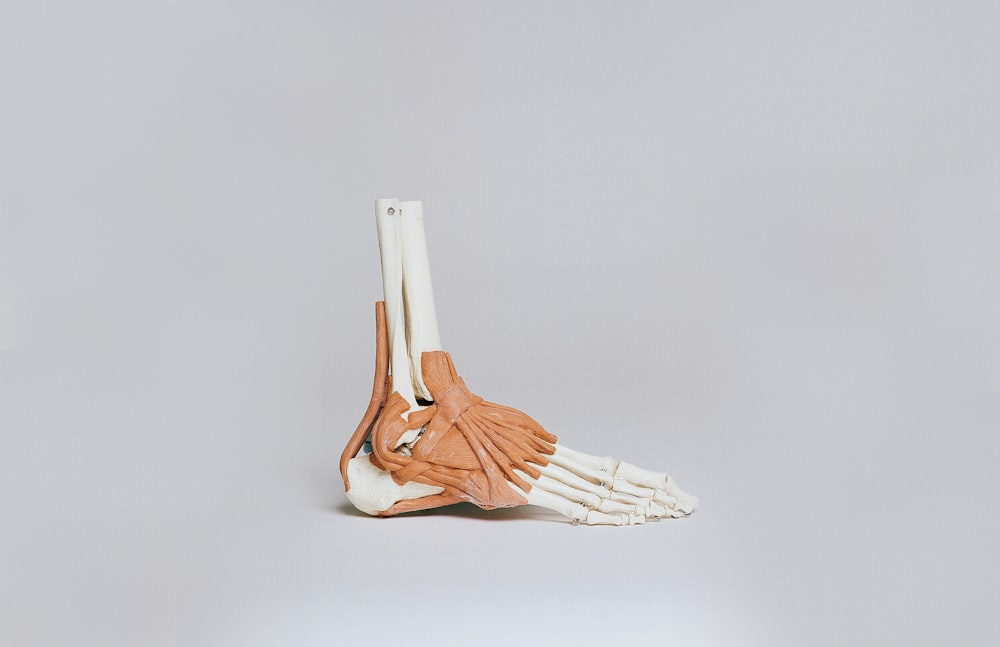目次
長母趾屈筋による足趾底屈の解剖学的研究
最近,足関節背屈可動域制限の原因として取り上げられることの増えている長母趾屈筋ですが,長母趾屈筋の伸張性が低下すると距骨の後方移動が制限され,背屈方向の可動域が制限されるわけです.
長母趾屈筋といえばご存じのとおり,母趾を底屈する作用のある筋肉ですが,今回の研究は長母趾屈筋の母趾屈曲作用以外の重要な働きを明らかにした報告です.

今回ご紹介する論文
Ann Anat. 2016 Mar;204:80-5. doi: 10.1016/j.aanat.2015.11.008. Epub 2015 Dec 15.
Anatomical Study of Toe Flexion by Flexor Hallucis Longus
Mutsuaki Edama 1, Masayoshi Kubo 2, Hideaki Onishi 2, Tomoya Takabayashi 2, Erika Yokoyama 2, Takuma Inai 3, Hiroshi Watanabe 4, Satoshi Nashimoto 5, Ikuo Kageyama 6
Affiliations expand
PMID: 26704354 DOI: 10.1016/j.aanat.2015.11.008
今回ご紹介する論文は2016年に掲載された比較的新しい論文です.
研究の目的
Because connections exist between the flexor hallucis longus (FHL) and flexor digitorum longus (FDL), the FHL is surmised to exert a flexion action on the lesser toes, but this has not been studied quantitatively. The objectives of this study have thus been to clarify the types of FHL and FDL connections and branching, and to deduce the toe flexion actions of the FHL.
長母趾屈筋(flexor halluces longus; FHL)と長趾屈筋(flexor digitorum longus; FDL)は解剖学的にも結合していることから,長母趾屈筋(FHL)には母趾以外の屈曲作用があると推測されますが,これまでに十分に検討されておりません.
この研究では長母趾屈筋(FHL)と長趾屈筋(FDL)の結合および長母趾屈筋(FHL)の分岐のタイプを明らかにし,長母趾屈筋(FHL)の母趾以外の屈曲作用を推定することを目的としております.
研究の方法
One hundred legs from 55 cadavers were used for the study, with FHLs and FDLs harvested from the plantar aspect of the foot, and connections and branches classified. Image-analysis software was then used to analyze cross-sectional areas (CSAs) of each tendon, and the proportion of FHL was calculated in relation to flexor tendons of each toe.
研究には55献体100脚を用い,長母趾屈筋(FHL)および長趾屈筋(FDL)を足底面から採取した後,それらの結合および分岐タイプを分類しております.
長母趾屈筋(FHL)腱の大きさを計算するため,画像解析ソフトを用いて各腱の横断面積(cross sectional area; CSA)を解析しております..
研究の結果
Type I (single slip from FHL to FDL tendon) was seen in 86 legs (86%), Type II (crossed connection) in 3 legs (3%), and Type III (single slip from FDL to FHL tendon) or Type IV (no connection between muscles) in 0 legs (0%). In addition, Type V (double slip from FHL to FDL tendon) was seen in 11 legs (11%), representing a new type not recorded in previous classifications.
タイプI(長母趾屈筋(FHL)から長趾屈筋(FDL)へ1分岐しているもの)は86脚(86%),タイプII(長母趾屈筋(FHL)と長趾屈筋(FDL)の腱が交差して結合しているもの)は3脚(3%), タイプIII(長趾屈筋(FDL)から長母趾屈筋(FHL)への1箇所結合しているもの)およびタイプIV(筋間の結合がないもの)は0脚(0%), タイプV(長母趾屈筋(FHL)から長趾屈筋(FDL)へ2箇所結合しているもの)は11脚(11%)でありました.
研究の結論
In terms of the various flexor tendons, the proportion of FHL showing tendons to toes 2 and 3 was high, at approximately 50-70%. Consequently, considering the branching type and proportion of CSA, the FHL was conjectured to not only act to flex the hallux, but also play a significant role in the flexion of toes 2 and 3. These results offer useful information for future clarification of the functional roles of tendinous slips from the FHL.
第2~3趾に長母趾屈筋(FHL)が付着している割合は約50~70%でありました.
この結果から分岐タイプやCSAを考慮すると,長母趾屈筋(FHL)には母趾だけでなく第2~3趾の屈曲作用を有することが示され,長母趾屈筋(FHL)の腱性スリップによる機能的役割を検討する上で有用な情報となると考えられます.
今回は長母趾屈筋の母趾屈曲作用以外の重要な働きを明らかにした報告をご紹介させていただきました.
長母趾屈筋(FHL)には第2-3趾の屈曲作用があるというのは興味深いですね.







コメント